Why Are My Dogs Paws So Rough: 5 Vet-Verified Reasons & Protection Tips
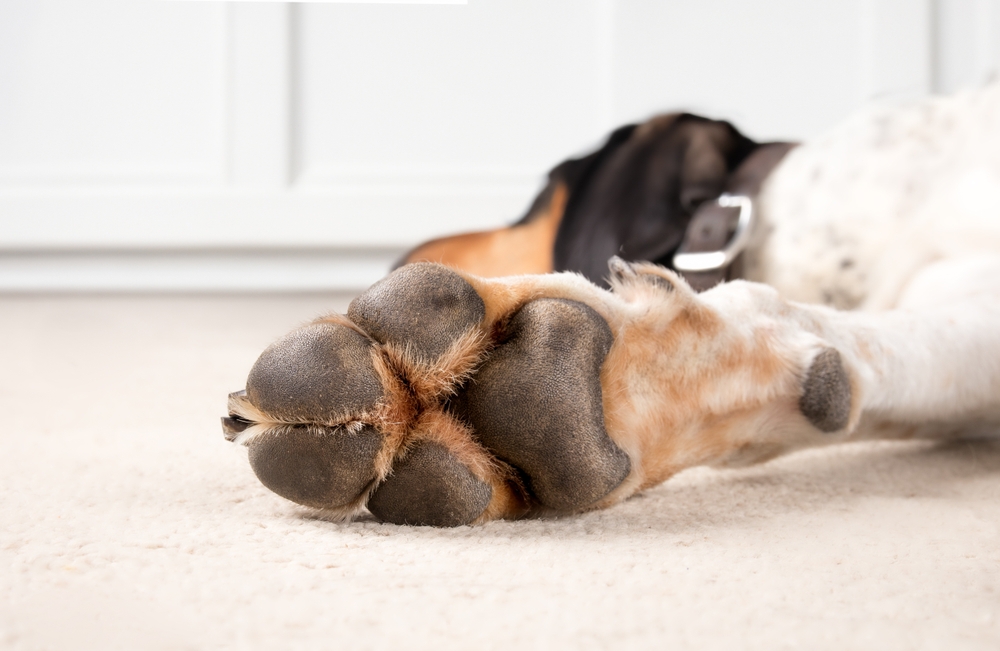
If you have been shaking your dog’s paw recently, you might have noticed that their paw pads are a little bit rough. While sometimes this can be normal, other issues could be a cause for concern.
And sometimes, changes in paw pads might signal an ongoing or chronic underlying health concern. In this article, we’re going to aim to discuss everything that can go wrong with paw pads and what we can do to protect our pups’ perfect tootsies.


The 5 Reasons a Dog’s Paws Might Be Rough
1. Cold Weather
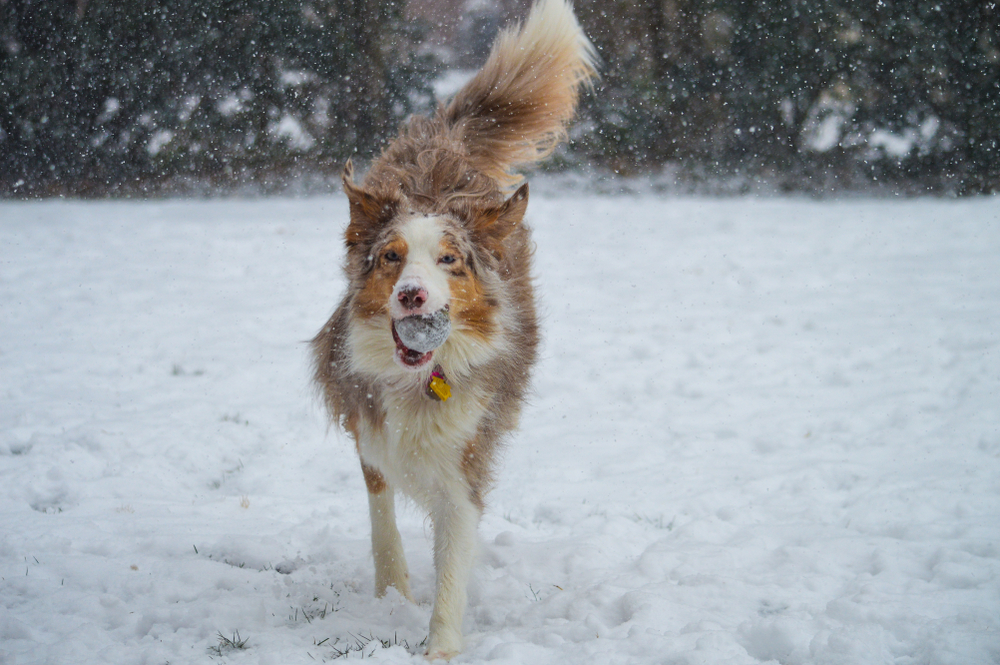

You might not give much thought to your pup’s paw pads in cold weather. After all, they come fully equipped with a fur coat, and it might not seem like they need much help otherwise. But the paw pads are exposed to cold, snowy, or icy pavement, grass, sand, etc., and therefore susceptible to damage.
In extreme cold temperatures, it can cause the paw pads to dry out or become irritated, causing cracking or other uncomfortable irritation.
2. Hot Surfaces
Similar to cold weather, during the warmer months, hot surfaces can really do a number on your pup’s paw pads. If you’re taking walks on sidewalks or pavement, these hot surfaces can damage the paw pads, even causing burns and blisters in the worst cases. This can lead to cracks, infections and roughness to the pads.
It is incredibly important to be mindful of temperatures. Even when it might not feel very hot to you, the pavement and concrete can really retain heat! We highly recommend walking your pup in the cooler hours of the morning and evening.
3. Rough Terrain


Have you been taking your dog on the road less traveled lately? If you’ve been doing a lot of hiking or you are walking on uneven or unusual surfaces, it can cause your pup’s paw pads to start to feel a little rough.
Think about walking barefoot. You eventually develop calluses on your feet that protect your feet from the elements. A dog’s paw pads will adapt to the environment they are walking on.
4. Hyperkeratosis
Hyperkeratosis occurs when the body produces too much keratin, which is the primary protein that makes up hair, nails and skin. In dogs hyperkeratosis typically affects the paw pads or the bridge of the nose.
It causes thickened areas of dry, rough skin on the paw pads which can become cracked and infected. Hyperkeratosis is more common in certain breeds of dogs including Labradors, Dogues de Bordeaux and Irish Terriers. It is also frequently seen in brachycephalic (short-nosed) dogs such as English Bulldogs due to poor conformation and abnormal weight bearing on the paw pads. This typically leads to rough, thickened areas of hyperkeratosis on the edges on the pads.
5. Health Issues
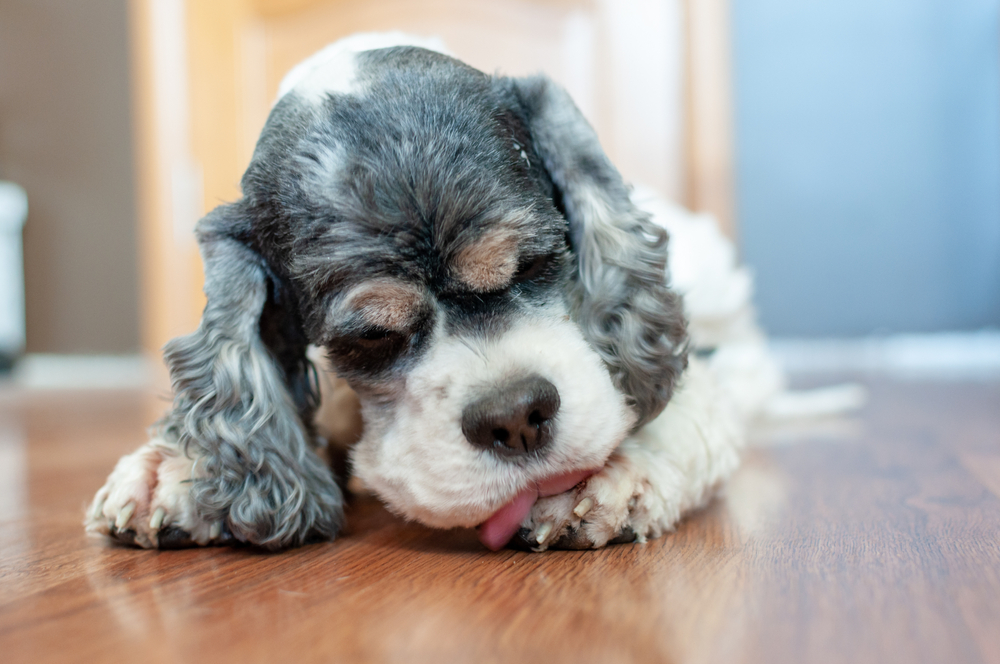

In some circumstances, dry paw pads might be a signal that there is an underlying health condition. Allergies and some other chronic conditions can affect the paw pads and skin in general.
- Pododermatitis: Pododermatitis is inflammation of the skin of the paw, it typically affects the skin between the digits but can also affect the paw pads and nail folds. It causes dogs to have painful, swollen, red and itchy feet, and can progress to painful sores if left untreated. Your dog might obsessively lick the infected paw, which can also lead to an increased risk of drying and cracking. Several things can cause pododermatitis including parasites (e.g. demodex mites), foreign bodies, allergies and conformation issues (often heavy set dogs with splayed feet). It is important for your vet to diagnose what’s the root cause of this issue so it can be treated appropriately.
- Autoimmune Conditions: Autoimmune conditions cause your dog’s immune system to attack their healthy cells. The underlying cause can stem from various factors, but certain autoimmune conditions can affect the health of the paw pads. Pemphigus foliaceus is the most common autoimmune skin condition in dogs and can cause thickened, crusty and cracked paw pads among other signs. Autoimmune diseases are not generally curable, but your pup’s signs can be controlled with certain medications such as corticosteroids or immunosuppressants.
- Endocrine Issues: Your dog’s endocrine system consists of glands that create and release hormones. If they have any type of hormonal imbalance or condition related to the endocrine system, it can cause a multitude of signs. The most common endocrine issues that affect a dog’s paws are Cushing’s disease and hypothyroidism. These can also lead to chronic dryness of the skin and paw pads, leading to cracking and infection.
- Mineral Deficiency: If your dog is deficient in a particular kind of mineral or their body cannot metabolize certain nutrients, it can cause an impact on the overall health of the skin and coat. Zinc deficiency in particular can cause skin thickening and cracking of the paw pads. It can either be caused by a dog’s inability to absorb zinc from the gut, which is most common in Northern breeds like Siberian Huskies and Alaskan Malamutes, or due to a lack of zinc in the diet. Once your vet has diagnosed the issue, prognosis is normally good with correction of the diet or zinc supplementation.
- Liver Disease: While rare, there is a condition called hepatocutaneous syndrome. While it is uncommon and highly unlikely that that is what is the problem with your particular pet, it is definitely worth a mention. This condition affects the skin and the liver, and it is most often seen in older dogs. Often the paw pads become thickened, cracked, or crusty, leading to ulcerations, abrasions, blisters, and pain. Hepatocutaneous syndrome is associated with metabolic diseases such as hepatopathy, diabetes mellitus, and liver or pancreatic tumors.


How to Protect Your Dog’s Paws
If your pup’s paws are having problems, you might wonder how to make that better for them. After all, cracked paw pads are a doorway to infection—and your dog walks over so many different types of bacteria and other potential avenues for infection daily.
Here are a few suggestions that can help clear things up.
Use Doggy-Specific Balm
There are quite a few different brands on the market. These are essentially salves that put a protective layer on your dog’s paw to heal and nourish the rough skin. They can help to clear up existing dryness or protect from cracking, plus they can help abrasions heal.
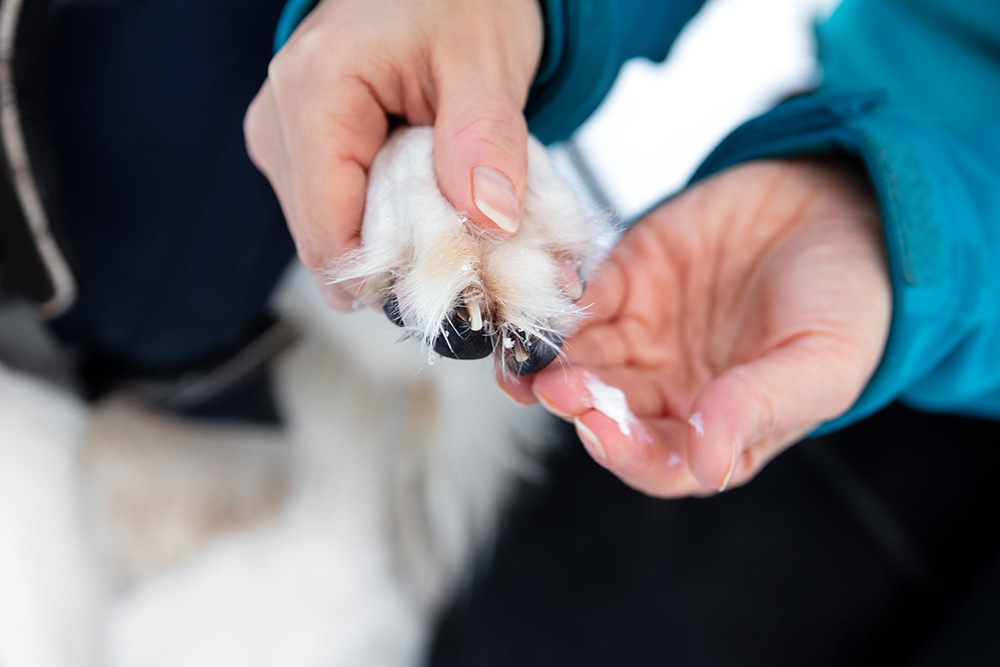

Buy Paw Protectors
Protectors fit over top of their little feet, allowing the foot to stay completely protected when you’re out in the elements. If it is extremely cold or hot outside, you can put these pads on your dog to protect them when they go out to use the bathroom or to take their daily walks.
Keep in mind that not every product of that nature is built the same. Some people have a lot of issues keeping a booty on a dog, due to their foot structure and the fact that many dogs will try to remove it themselves.
Ensure Appropriate Hygiene
It is important to keep up with appropriate hygiene for your pup. This is especially important if your dog has a lot of fur in between their toes where dirt and debris can get trapped.
It can cause bacteria buildup and other issues, leading to cracked and dry paw pads. Always clean out all the creases and make sure that you’re keeping their paws neatly trimmed if they have longer fur.
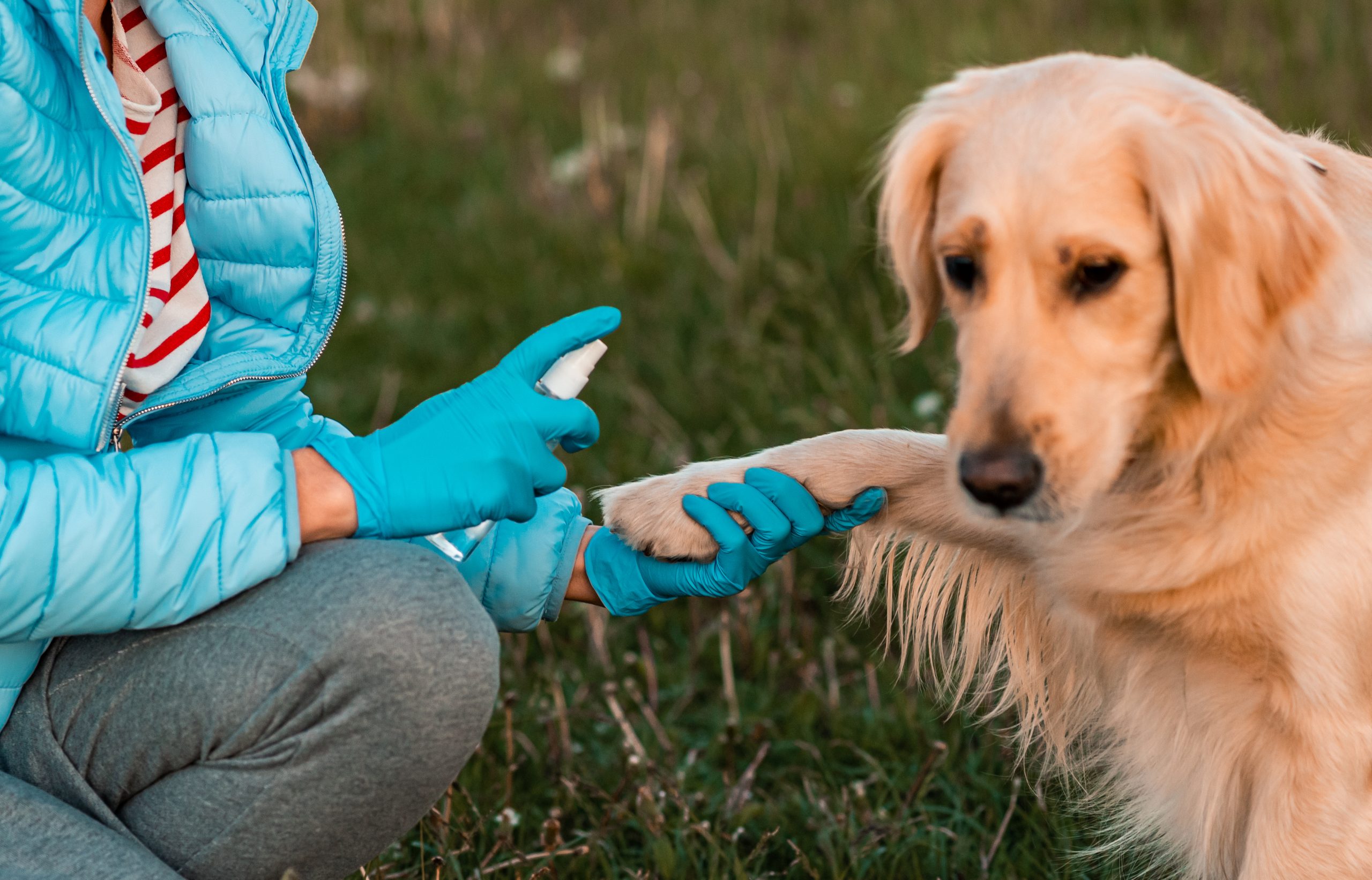

Try an Oil
You can apply coconut oil or olive oil occasionally to moisturize and protect the paw pads and deal with minor rough areas and cracks.


Conclusion
Dry paw pads are often an issue that can be managed or fixed from the comfort of your home. However, it is always best to cover your bases and check with your vet before making the call especially if they are sore or painful.
If your pup has any chronic condition that will cause recurring paw dryness, your vet might prescribe different medications or suggest over the counter treatments to protect the health and overall condition of your pup’s sensitive little toe beans.
Featured Image Credit: sophiecat, Shutterstock



